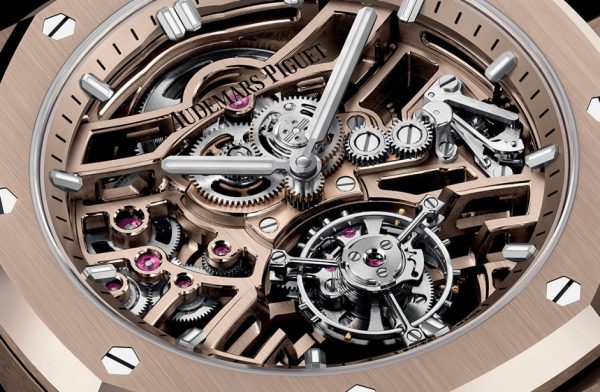When looking for a mechanical watch, one important aspect to consider is the power reserve. For both automatic and manual-wound watches, the power reserve is essential, as it ensures the watch continues running even when it’s not being worn.
Innovations in power reserve technology continue to evolve, and nowadays, a power reserve of 38 hours is generally considered the minimum average. In fact, high-end watches now often feature power reserves ranging from 72 hours to 5 days. Various methods are employed by different brands to extend the power reserve of their watches. Common techniques include enlarging the barrel and mainspring, adding additional barrels, and adjusting the watch’s frequency.

Some watches take these innovations to the extreme. For example, the Hublot MP-05 La Ferrari boasts an impressive 50-day power reserve, achieved through the integration of 11 barrels. This exceptional power reserve necessitates the use of a special tool for a full wind.
On the other hand, the Swatch Group has attained an 80-hour power reserve with the ETA C07.111 movement by reducing the frequency from 28,800 vibrations per hour (vph) to 21,600 vph, a technique known as underclocking. This approach is exemplified in watches like Tissot’s Powermatic 80 and Hamilton’s H80.
Is power reserve important?
In the horology world, visual aesthetics are often the main focus. People primarily buy watches to tell the time and as fashion accessories. Unfortunately, most watches do not come with a power reserve indicator. Watchmakers tend to prioritize adding features like date displays or chronographs to the dial. As a result, the power reserve is often an unseen feature in watches, playing a role similar to behind-the-scenes workers in a film: invisible, yet still an important part.

Compared to most other details in a watch, the duration of the power reserve might not be in the top five most important elements, but it remains a feature that watchmakers highlight.
What are the advantages of a watch with a high power reserve duration?
There are two main groups of people who benefit from a high power reserve. The first and most obvious group is the owners of manual winding watches. They will wind their watches less frequently but will need to wind them more when they do. This is particularly helpful because you might forget to wind your watch if you wake up late. With an 80-hour power reserve, you only need to wind a manual winding watch once every five days.
The second group consists of those who wear their mechanical watches only during the middle of the week and save them inside the box over the weekend. Traditionally, watches are worn during the week and set aside for the weekend. Many luxury watch buyers still follow this trend, leading watch brands to market them as “Weekend-Proof” watches.

In theory, you take off your watch on Friday after work, and when you put it back on Monday, the movement is still running, so you don’t need to reset it.
Discover your Perfect Luxury Timepiece and Enjoy Special Privilege only at The Time Place Boutique.
While it might seem that mechanical watches only need a power reserve of around 48 hours, offering a high power reserve duration allows watchmakers to showcase their advancements in horology and strive to outdo one another. For those who are passionate about mechanical watches and the innovations in their movements, this is definitely seen as an added value.
So, is a watch with a high power reserve duration important? Discover our long power reserve watches online or visit The Time Place boutique for more information.





